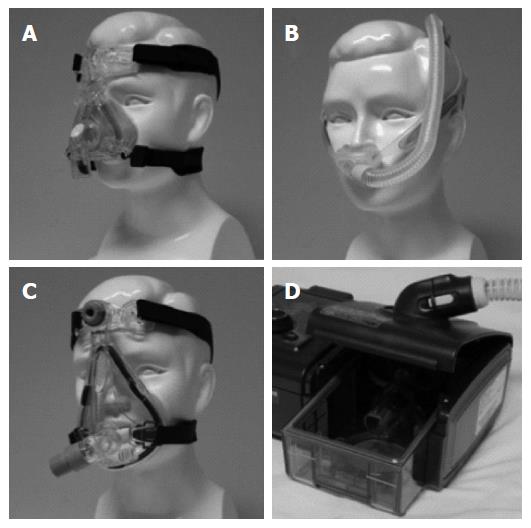Copyright
©The Author(s) 2015.
World J Respirol. Jul 28, 2015; 5(2): 112-125
Published online Jul 28, 2015. doi: 10.5320/wjr.v5.i2.112
Published online Jul 28, 2015. doi: 10.5320/wjr.v5.i2.112
Figure 1 Adaptive servo-ventilation can be considered as an advanced mode of bi-level positive airway pressure.
A: In response to central events, adaptive servo-ventilation increases pressure support during hypoventilation and decreases pressure support during hyperventilation, with the goal of stabilizing ventilation; B: In response to obstructive events (apneas, airflow limitation, and snoring), adaptive servo-ventilation increases expiratory positive airway pressure, with the goal of suppressing obstruction.
Figure 2 Several types of masks are available as an adaptive servo-ventilation interface for patients to discover a more comfortable fit: nasal masks (A), a pillow mask (B), an oro-nasal mask (C), and an optional heated humidifier connected to an adaptive servo-ventilation device (D).
- Citation: Tomita Y, Kasai T. Effectiveness of adaptive servo-ventilation. World J Respirol 2015; 5(2): 112-125
- URL: https://www.wjgnet.com/2218-6255/full/v5/i2/112.htm
- DOI: https://dx.doi.org/10.5320/wjr.v5.i2.112










